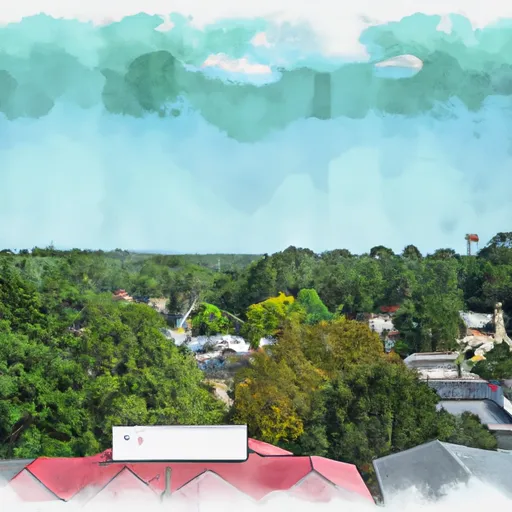-
 Snoflo Premium
Snoflo Premium
Get unlimited access to all our content
With no Ad interruptions! - Start Your Free Trial Login with existing account
Woodland
Eden Index
Climate
8.0
•
Recreation
2.8
•
Community
•
Safeguard
4.2/10

Woodland, Georgia is a small town located in Talbot County, with a population of approximately 300 residents. It experiences a humid subtropical climate, characterized by hot and humid summers, mild winters, and abundant rainfall throughout the year. The average high temperature in summer is around 90°F (32°C), while winter temperatures range from 30°F to 60°F (-1°C to 16°C).
The town is situated near the Flint River, which contributes to its hydrology constituents. The river provides excellent opportunities for fishing, boating, and kayaking. Anglers can find a variety of fish species, including largemouth bass, catfish, and crappie.
Outdoor enthusiasts can also explore the nearby Woodland Wildlife Management Area, a 33,000-acre public hunting area. This vast expanse of forests and wetlands offers opportunities for hunting game such as deer, turkey, and small game. Hiking and bird-watching are also popular activities in the area.
Woodland, Georgia offers a serene and natural environment for those seeking outdoor recreation, with its favorable climate, water resources, and diverse wildlife.
What is the Eden Index?
The Snoflo Eden Index serves as a comprehensive rating system for regions, evaluating their desirability through a holistic assessment of climate health, outdoor recreation opportunities, and natural disaster risk, acknowledging the profound impact of these factors on livability and well-being.
Climate Health Indicator (CHI): 8.0
Woodland receives approximately
1246mm of rain per year,
with humidity levels near 86%
and air temperatures averaging around
17°C.
Woodland has a plant hardyness factor of
8, meaning
plants and agriculture in this region tend to thrive here all year round.
By considering the ideal temperature range, reliable water supplies, clean air, and stable seasonal rain or snowpacks, the Climate Health Indicator (CHI) underscores the significance of a healthy climate as the foundation for quality living.
A healthy climate is paramount for ensuring a high quality of life and livability in a region, fostering both physical well-being and environmental harmony. This can be characterized by ideal temperatures, reliable access to water supplies, clean air, and consistent seasonal rain or snowpacks.
Weather Forecast
Streamflow Conditions
Apalachicola
Area Rivers
Apalachicola
Snowpack Depths
Apalachicola
Reservoir Storage Capacity
Apalachicola
Groundwater Levels
Recreational Opportunity Index (ROI): 2.8
The Recreational Opportunity Index (ROI) recognizes the value of outdoor recreational options, such as parks, hiking trails, camping sites, and fishing spots, while acknowledging that climate plays a pivotal role in ensuring the comfort and consistency of these experiences.
Access to outdoor recreational opportunities, encompassing activities such as parks, hiking, camping, and fishing, is crucial for overall well-being, and the climate plays a pivotal role in enabling and enhancing these experiences, ensuring that individuals can engage in nature-based activities comfortably and consistently.
Camping Areas
| Campground | Campsites | Reservations | Toilets | Showers | Elevation |
|---|---|---|---|---|---|
| Cochran Mill County Park | None | 937 ft | |||
| Clark Creek South - Allatoona Lake | None | 858 ft | |||
| Clark Creek North - Allatoona Lake | None | 896 ft | |||
| Old Hwy 41 - Allatoona Lake | None | 932 ft | |||
| Red Top Mountain State Park | None | 927 ft | |||
| World Famous Lake Military - Atlanta NAS | None | 920 ft | |||
| Dobbins Lakeside Military | None | 1,079 ft | |||
| Payne - Allatoona Lake | None | 848 ft | |||
| Lake Allatoona Military - Fort McPherson | None | 891 ft | |||
| McKinney - Allatoona Lake | None | 889 ft |
Nearby Ski Areas
Catastrophe Safeguard Index (CSI):
The Catastrophe Safeguard Index (CSI) recognizes that natural disaster risk, encompassing floods, fires, hurricanes, and tornadoes, can drastically affect safety and the overall appeal of an area.
The level of natural disaster risk in a region significantly affects safety and the overall livability, with climate change amplifying these risks by potentially increasing the frequency and intensity of events like floods, fires, hurricanes, and tornadoes, thereby posing substantial challenges to community resilience and well-being.
Community Resilience Indicator (CRI):
The Community Resilience Indicator (CRI) recognizes that education, healthcare, and socioeconomics are crucial to the well-being of a region. The CRI acknowledges the profound impact of these elements on residents' overall quality of life. By evaluating educational resources, healthcare accessibility, and economic inclusivity, the index captures the essential aspects that contribute to a thriving community, fostering resident satisfaction, equity, and social cohesion.

